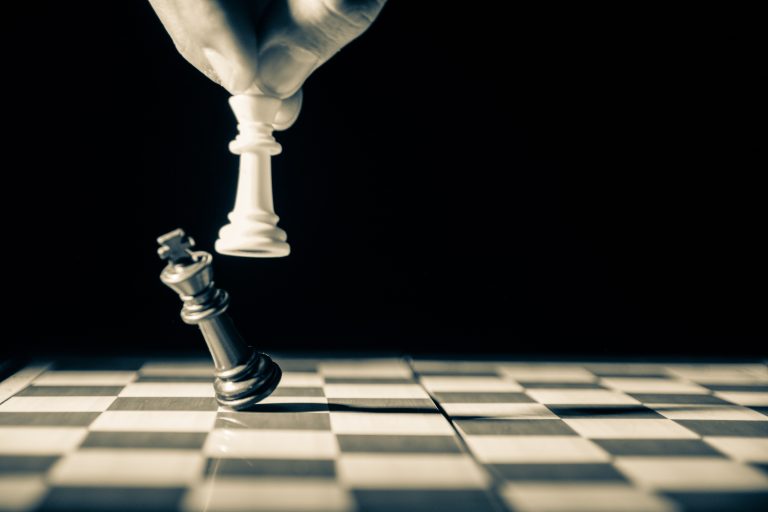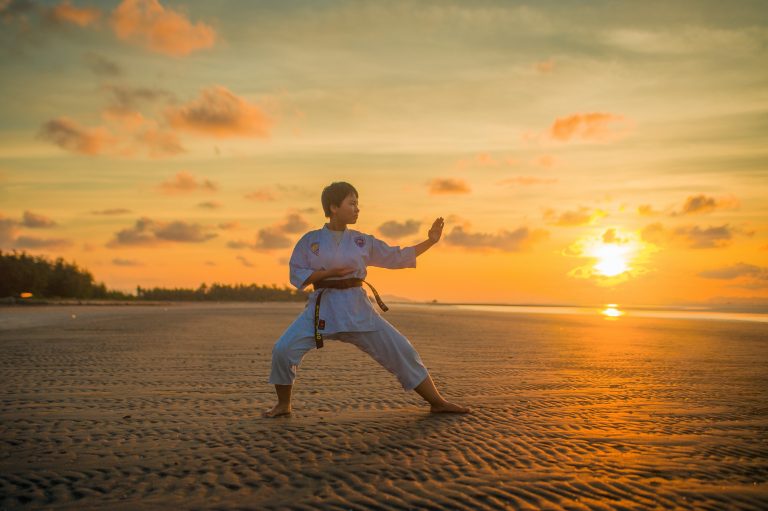What Are the Karate Belts in Order: A Comprehensive Guide
Karate is a martial art that originated in Japan in the early 20th century. It is a popular form of self-defense and has gained significant recognition as a sport as well. One of the distinguishing features of karate is the belt system that practitioners use to mark their progress and achievements. In this article, we will learn about the different karate belts in order and what they represent.
The History of the Karate Belt System:
The karate belt system originated in the early 20th century in Japan. The founder of modern karate, Gichin Funakoshi, introduced the system to encourage students to set goals, track their progress, and motivate them to improve their skills. The belt system consisted of two colors: white and black. The white belt indicated a beginner, while the black belt indicated a master.
In the early 1950s, the belt system was modified to include more colors to differentiate between beginner and advanced levels. The new belt system included the following colors in order of ascending level:
Karate Belts in Order:
White Belt:
The white belt is the starting point for all beginners who are new to karate. It represents purity and humility as the practitioner begins their journey into the art form. At this stage, the practitioner learns the fundamental basic skills of karate, such as blocks, punches, kicks, and stances.
Yellow Belt:
The yellow belt is the next level after white, and it represents the sun, which brings light and energy. At this stage, the practitioner develops increased focus and learns more complicated techniques. The yellow belt emphasizes the importance of practicing techniques to gain versatility and accuracy.
Orange Belt:
In the order of karate belts, the orange belt indicates a higher level of proficiency. It represents the warmth of the rising sun and symbolizes the warmth and enthusiasm of the student. At this stage, the practitioner is starting to refine their techniques by improving their control and power.
Green Belt:
The green belt represents growth, which is why it symbolizes the rapidly growing plants in nature. At this stage, the practitioner gains a deeper understanding of the basics and becomes more skilled in applying techniques to real situations.
Blue Belt:
The blue belt represents the sky, which is vast and seemingly limitless. At this stage, the practitioner gains a broader understanding of the art form and learns more complex techniques, including throws and grappling moves.
Purple Belt:
The purple belt emphasizes patience and requires a strong mental fortitude. This belt represents the coming of dawn, symbolizing a new beginning in the journey. At this stage, the practitioner develops a deep understanding of timing and learns to control their mind and body.
Brown Belt:
The brown belt represents maturity and a deeper understanding of the art form. It is also the last stage before becoming a black belt. At this stage, the practitioner focuses on preparation for mastery while refining their technique with a higher polish.
Black Belt:
The black belt is the ultimate goal and represents mastery of the art form. The black belt symbolizes a new beginning, just like the coming of night after day. The practitioner at this stage gains an even deeper understanding of the art form and begins to consider the legacy of karate.
In
What Are the Karate Belts in Order?
Introduction
Karate is a popular martial art that originated in Japan. It is known for its physical and mental benefits, including increased strength, flexibility, and focus. A major part of karate is the ranking system, which is denoted by colored belts. In this article, we will answer some of the most frequently asked questions about the karate belts in order.
1. What Are the Different Karate Belt Colors in Order?
There are six major colored belts in karate, listed in order from beginner to advanced:
1. White Belt
2. Yellow Belt
3. Orange Belt
4. Green Belt
5. Blue Belt
6. Brown Belt
These colored belts signify the student’s level of mastery in the sport, with white being the lowest rank and brown being the highest before black belt.
2. What Do the Karate Belt Colors Signify?
Each belt color represents a different level of achievement in karate. Here is what each belt color signifies:
1. White Belt – The white belt represents a beginner who is just starting to learn the basics of karate.
2. Yellow Belt – The yellow belt represents a student who has progressed beyond the beginner level and has a basic understanding of the techniques.
3. Orange Belt – The orange belt signifies that the student has improved their techniques significantly and is starting to master the basics of karate.
4. Green Belt – The green belt represents a student who is now considered an intermediate level karateka.
5. Blue Belt – The blue belt signifies an advanced student who has a good understanding of karate principles and techniques.
6. Brown Belt – The brown belt signifies a student who has almost mastered the art of karate and is getting ready to advance to the black belt.
3. What Is the Highest Karate Belt?
The highest karate belt is the black belt. It is often seen as the ultimate goal for karateka and is a symbol of mastery in the sport. Earning a black belt requires years of dedicated training and practice.
4. What Is the Order of Belts in Karate?
The order of belts in karate is as follows, starting from the beginner level to the advanced level:
1. White Belt
2. Yellow Belt
3. Orange Belt
4. Green Belt
5. Blue Belt
6. Brown Belt
7. Black Belt
Each of these belts has different levels within them that signify the student’s progress in karate.
5. How Long Does It Take to Get a Black Belt in Karate?
The amount of time it takes to earn a black belt in karate varies depending on the individual’s dedication and training. On average, it takes about 5-7 years of consistent practice to earn a black belt.
6. Can You Skip Belts in Karate?
Skipping belts is possible in some styles of karate, but it is not recommended. Each belt represents a level of mastery and skipping a belt can hinder a student’s progress in learning the necessary techniques and principles.
What are the Karate Belts in Order?
Karate is a popular martial art that originated in Okinawa, Japan, and is now practiced all over the world. The sport has a ranking system based on different colored belts, which represents a student’s skill level and experience. If you are new to Karate and want to learn about the Karate belts in order, you’ve come to the right place. In this article, we’ll take you through each colored belt from the beginner levels to the advanced stages.
White Belt
The white belt is the starting point of every Karate student’s journey. It represents purity, innocence, and an eagerness to learn. A white belt holder has little or no knowledge of the basic techniques and principles of Karate. At this level, students learn the fundamental aspects of Karate, such as kicks, punches, stances, and blocks.
Yellow Belt
After achieving the white belt, the next level is the yellow belt. The yellow belt represents the first step towards proficiency in Karate. At this level, the student has a basic understanding of the fundamental techniques of Karate. Students learn more advanced techniques and principles such as hip rotation, kicking, and striking power.
Orange Belt
The orange belt is the third level in the Karate ranking system. At this point, students have developed a basic level of proficiency in Karate. They understand the principles and techniques of the sport and can apply them in a limited form. Students at this level learn more advanced techniques such as sparring, Kata, and groundwork.
Green Belt
The green belt represents the first step towards advanced Karate. At this level, students have developed a high level of proficiency and skill in the sport. Students learn advanced techniques such as combinations, multiple-attack sparring, and self-defense techniques.
Blue Belt
The blue belt is the fifth level in the Karate ranking system. At this level, students are considered advanced Karate practitioners. They have a deep understanding of the techniques and principles of Karate and can now apply them with ease. Students at this level learn more complex techniques such as throws, sweeps, and takedowns.
Purple Belt
The purple belt is the sixth level in the Karate ranking system. At this level, students have gained mastery over the fundamental techniques of Karate. They are now able to execute complex techniques with ease and efficiency. Purple belt holders learn advanced self-defense techniques and further their understanding of the sport.
Brown Belt
The brown belt is the second to last belt before achieving the highest level of proficiency in Karate. At this level, students have become experts in the sport and have a vast knowledge of the techniques and principles of Karate. Students at this level learn more advanced techniques such as joint locks, pressure points, and grappling.
Black Belt
The black belt is the ultimate goal of every Karate practitioner. It represents mastery over the art and a deep understanding of its principles and techniques. The black belt level is divided into ten Dans or degrees, with the tenth Dan being the highest achievable rank. Earning a black belt requires dedication, hard work, and a consistent practice schedule.
Conclusion
The Karate ranking system is an effective way to measure a student’s skill level and progress in the sport. Each colored belt represents a student’s ability to understand and apply the principles and techniques of Karate. Remember, the journey to earning a black belt is not an easy one. It requires hard work, persistence, and a never-give-up attitude. So, keep practicing, and one day, you might achieve the ultimate rank – the black belt.
Inhaltsverzeichnis






